Mad Hedge Biotech & Healthcare Letter
October 24, 2019
Fiat Lux
Featured Trade:
(SPECIAL CANCER ISSUE - PART II)
(LLY), (PFE), (GTHX)

Mad Hedge Biotech & Healthcare Letter
October 24, 2019
Fiat Lux
Featured Trade:
(SPECIAL CANCER ISSUE - PART II)
(LLY), (PFE), (GTHX)

The most groundbreaking biotechnology discoveries in this century have now reached the flashpoint between theoretical discussions and their realization. Billions of dollars have been poured into the research and development phases, with some companies already generating income. More impressively, potential cures for a number of fatal diseases are now in the pipeline. For early investors, this translates to massive earnings in the succeeding years.
Among the widely sought-after cures is for triple-negative breast cancer (TNBC), which is the most aggressive form of the disease. It also has a poorer prognosis compared to other types of breast cancer, so it’s crucial to offer treatments that can not only improve chances of survival but also improve the quality of life of the patients suffering from it.
Here are the three most promising developments in the search for the cure of TNBC.
Eli Lilly (LLY)
It’s always challenging to be a third-to-market treatment especially when you’re trailing a pioneering drug like Pfizer’s (PFE) groundbreaking drug Ibrance and Novartis’ blockbuster drug Kisqali. However, Eli Lilly (LLY) is hoping that its recent data on Verzenio would bolster its hold in the market.
While it remains to be seen if Verzenio can catch up with Ibrance’s success, the Eli Lilly drug has managed to surpass estimates by $19 million during the first quarter of 2019 following an underwhelming fourth quarter in 2018. As for the latest data on Verzenio, the company disclosed that a combination of the drug and hormone therapy improved the median to 46.7 months compared to the 37.3 months for those who solely underwent therapy.
The 9.4 survival advantage indicates a 25% decrease in mortality risk. Apart from that, patients also enjoyed a better quality of life as this combo allowed them to manage for 50 months -- or over four years -- without the need for follow-up chemotherapy. This is a huge advantage since hormone therapy alone only allowed 22 months before the next treatment.
The effects don’t end there though. Eli Lilly has another trick up its sleeve to make sure that it stands out from the drugs targeting similar diseases. According to the company, Verzenio is the only drug that can help patients with tough-to-treat diseases.
That is, the Eli Lilly drug took effect even on patients who were initially resistant to therapy as well as those who quickly relapsed after treatment. This resulted in a decrease in death risk by roughly 31%. While this aspect still requires additional tests, the results showed a promise that not even Pfizer’s Ibrance can deliver.
Merck & Co. (MRK)
Merck & Co. (MRK) has rallied virtually the entire force of its research and development team behind ensuring that Keytruda remains on top -- way ahead of competitors like Bristol Myers Squibb’s (BMY) Opdivo. At the moment, Merck’s moneymaker has approximately 1,050 clinical trials queued to assess the possibilities of this drug further dominating clinical practice.
So as Bristol Myers Squibb attempts to woo investors with the promising results of Opdivo, Merck has been busy adding another notch in its belt with another landmark first for Keytruda. Aside from its current applications, this Merck cash cow is also pegged as a promising treatment for TNBC when combined with therapy.
Based on the data on its breakthrough therapy designation, this indication is likely on the fast track towards an FDA approval soon. To date, Keytruda has more than 20 oncology indications in the United States alone with the giant biopharma receiving the green light to market the drug in China as well.
If things move forward as planned, Keytruda may very well be on its way to topple AbbVie Inc.’s (ABBV) Humira from the top of the list of best-selling drugs worldwide in the next five years. After all, revenues from the drug are expected to hit anywhere between $17 billion and $24 billion in 2024.
G1 Therapeutics (GTHX)
Joining the biopharma giants is newcomer G1 Therapeutics (GTHX). This up-and-coming firm has recently released its clinical data on oral selective estrogen receptor degrader (SERD) for metastatic TNBC. Called G1T48, this new treatment provided promising results when combined with the company’s own breakthrough therapy called trilaciclib.
For comparison, G1 Therapeutics’ combo is said to be more potent than AstraZeneca plc’s (AZN) Faslodex, which is currently the only FDA-approved SERD treatment in the market. Unlike Faslodex though, which requires intramuscular injection, G1 Therapeutics’ drug can be taken orally once a day. Needless to say, this mode of treatment offers an improved patient experience.
With such promising results, G1 Therapeutics plans to roll out new drug application submissions by the fourth quarter of 2019. If things move smoothly, then the treatment plan should be out in the market sometime in the second quarter of 2020.
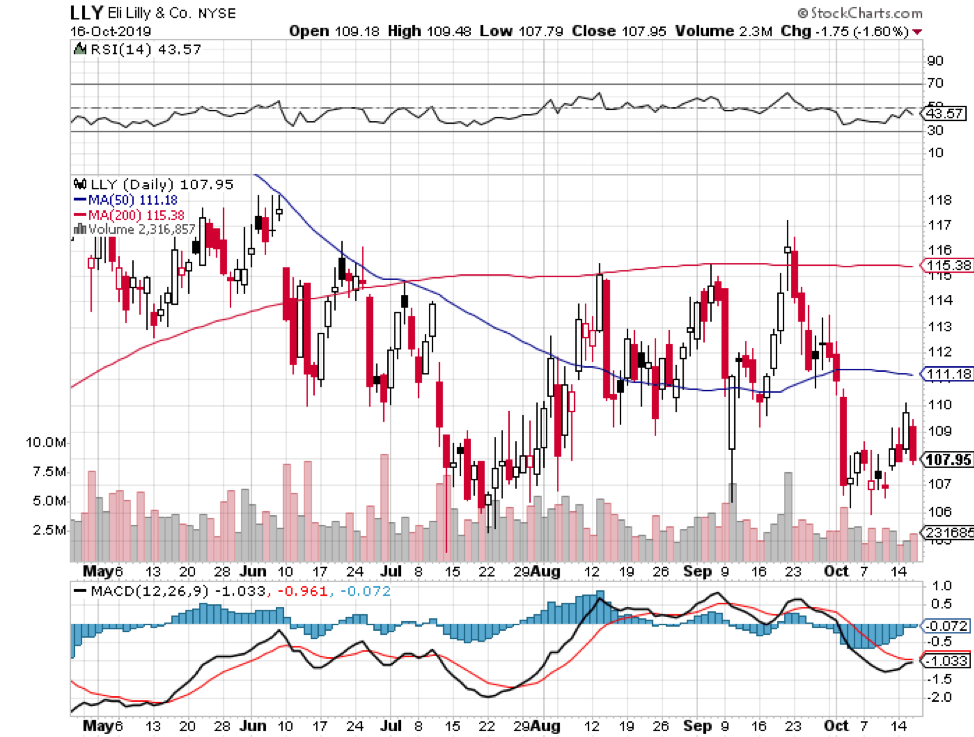
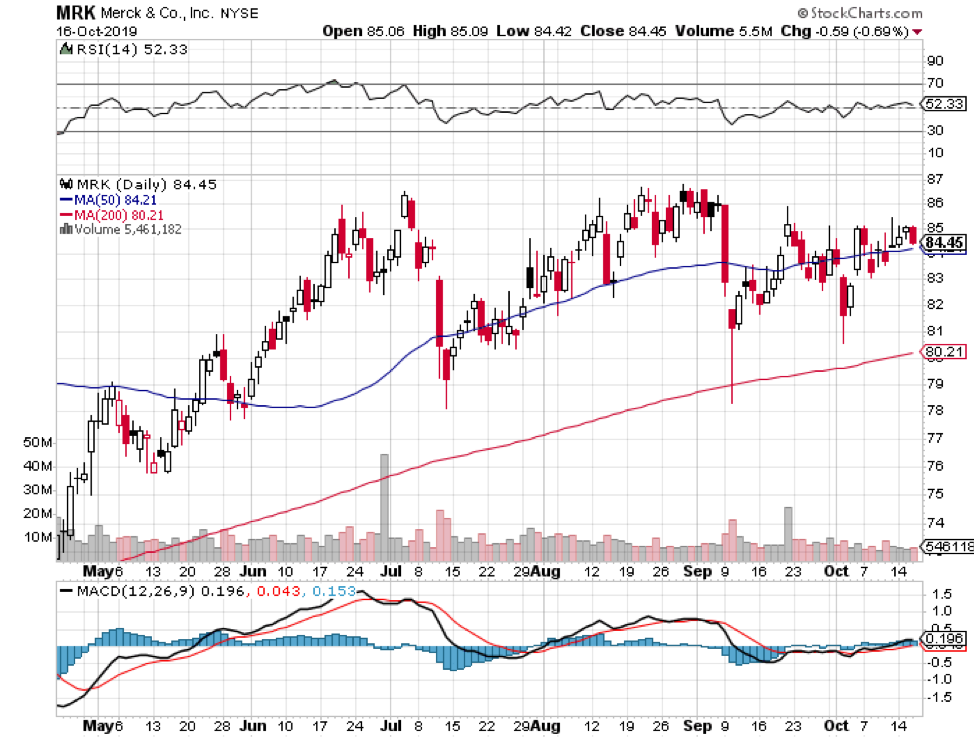
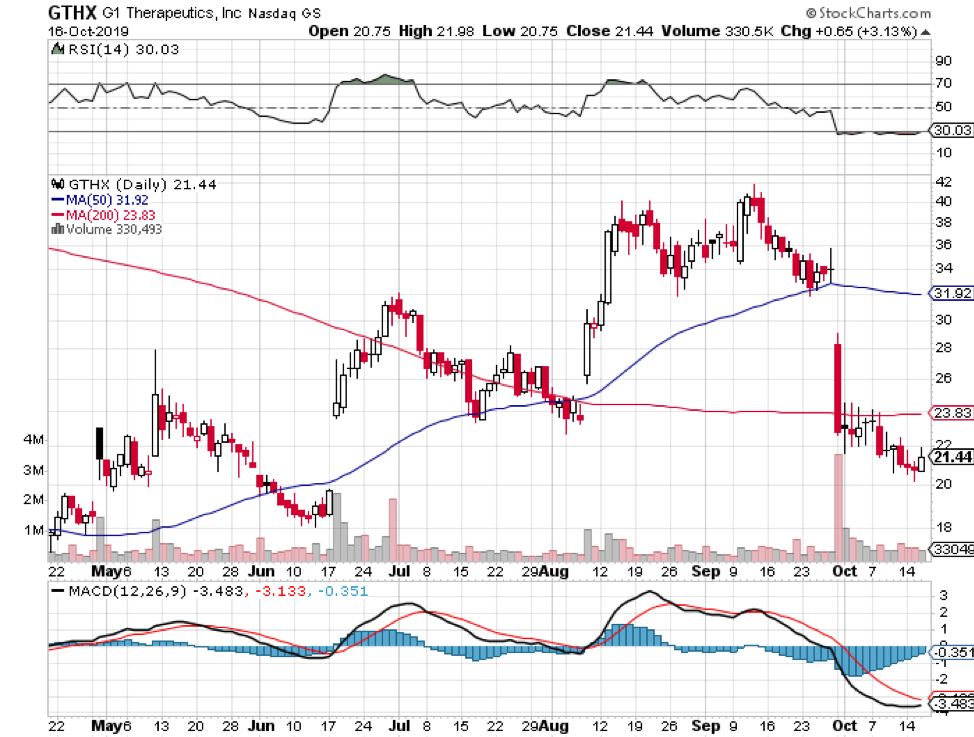
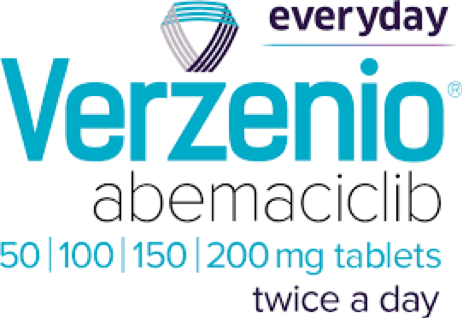
Mad Hedge Biotech & Healthcare Letter
October 1, 2019
Fiat Lux
Featured Trade:
(THE PLAYERS GUIDE TO BIOTECH INVESTING)
(AMGN), (PFE), (NOVN), (ABBV), (ABT),
(AGN), (ROG), (GSK), (CELG), (JNJ), (BMY)

You can’t watch a game without a program, and the lineup for biotech and healthcare is truly astonishing. No surprise then that the fields account for more or less than 17% of US GPD.
Here is a listing of the biggest $100 billion plus products you have never heard of. The good news is that you have just stumbled across a sector that will generate no less than a staggering $1.4 trillion in sales over the next five years.
That means it’s certainly worth your time getting to know this field. With this amount at stake, it’s no wonder companies manufacturing these blockbuster drugs are sparing no expense to fight off patent vultures.
A good example is Amgen (AMGN), which recently won its case to extend the patent life of rheumatoid arthritis biological Enbrel against Novartis AG’s (NOVN) biosimilar arm Sandoz. Since each extra hour added to patent life means millions of dollars (and sometimes billions) in sales, the additional 10 years of exclusivity for Enbrel is a massive victory for Amgen.
In a recent study released by Evaluate Pharma, Enbrel was ranked third in the top 10 biggest sellers up to 2024. The forward-looking consensus projection anticipates Amgen’s golden goose to hit roughly $140 billion in total revenues in five years – a truly impressive performance particularly for a drug that has been around for more than 20 years. However, Enbrel’s longevity pales in comparison to the other behemoths in the biopharma realm.
Up until 2018, Pfizer’s (PFE) Lipitor held the title of earning the highest lifetime sales in the industry. Since its launch in 1997, the cholesterol drug has raked in $164.4 billion in revenues so far with the number estimated to reach $180 billion by 2024. Lipitor’s success is highlighted more by the fact that it's under a small molecule status and holds approval for a very narrow indication.
Overtaking Lipitor to take the top spot is AbbVie’s (ABBV) rheumatoid arthritis treatment Humira, which closed with $20 billion in sales in 2018 alone. While some AbbVie investors frown upon the over-reliance of the company on Humira, it appears that the efforts to protect the drug has paid off big time.
With patent protection (132 approved patents!) safeguarding its exclusivity in the market, Humira is projected to reach a total of $240 billion in revenues by 2024. Clearly, the rewards they’ve been reaping show no signs of abating anytime soon.
More importantly, Humira’s robust sales, which makes up almost 70% of the company’s profits, has provided AbbVie with the financial capacity to finally get out of the shadow of parent company Abbott Laboratories (ABT) and come up with its own pipeline. As it happens, AbbVie’s efforts towards this direction have already started with the massive purchase of Allergan (AGN) for $63 billion this year.
Apart from Lipitor, Humira, and Enbrel, there are three more blockbuster products with sales that hit the $100 billion mark as of 2018 -- a figure that would make Ecuador proud to claim as their annual GDP. These are Roche Holding Ltd. Genussscheine’s (ROG) chemotherapy drug Rituxan, Amgen’s anemia treatment Epogen, and GlaxoSmithKline’s (GSK) asthma medication Advair.
One biopharma bestseller that leapfrogged a lot of other drugs in the market is multiple myeloma medication Revlimid -- aka the drug that built Celgene (CELG). With an entry date of 2008, this drug is the newest one on the list. While Revlimid’s sales are impressive, what’s actually quite exciting is the fact that its projected revenues easily outstrip its already notable sales of $53.69 billion.
By 2024, this Celgene blockbuster is estimated to reach $123.64 billion in sales. There’s a caveat to this though as Revlimid’s success in the years to come is dependent on how Celgene plans to deal with generic competition chomping at the bit and ready to attack once the drug reaches its 2022 patent expiration date.
Another big-ticket drug that might see a bit of a decline in sales soon is from Johnson & Johnson (JNJ). While the company has always been aggressive when it comes to dominating the market for its Crohn's Disease drug Remicade, an investigation by the Federal Trade Commission (FTC) might put a damper on things soon. According to recent reports, JNJ has been suspected of contracting payers to ensure market control and stave off competitors.
Meanwhile, the three horsemen of Roche, namely, Rituxan, cancer and eye disease medication Avastin, and breast cancer treatment Herceptin, reached a collective amount of $365 billion in total sales. These three are anticipated to stay put on top of the industry in the next five years as well, thanks to their competitive pricing and aggressive strategies to protect their patents.
Rounding out the list is Amgen’s Epogen, which is expected to add $107.90 billion to the already astounding $115.87 billion it generated for the company. Meanwhile, GSK’s Advair, which brought in $113.61 billion, is expected to pour in an additional $104.20 billion by 2024.
Interestingly, the majority of the top 10 franchise drugs are biologics except for Sanofi’s (SAN) ulcer treatment Zantac, Bristol-Myers Squibb Co’s (BMY) heart medication Plavix, Advair, and of course, Lipitor. In fact, this is considered as the primary reason for their capability to fight off potential copycats for years.
In some cases, their monopoly of the market has allowed them to expand to include various other indications in their coverage. The massive sales of biologics are also rooted in their ability to demand big-ticket reimbursements. Unlike their generic competitors, brand recognition alone makes it more convenient for patients to ask for compensation.
Needless to say, the success stories of these drugs make it quite obvious why these biopharma companies employ a battalion of legal experts to fend off the rise of generics. While the onslaught of biosimilars cannot be helped, these lawyers ensure that patients opting for these versions of the medication would find it incredibly difficult to ask for biosimilar reimbursements.

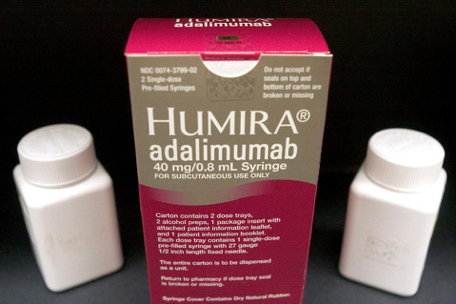
Global Market Comments
March 15, 2019
Fiat Lux
Featured Trade:
(BUY JOHNSON & JOHNSON ON THE BAD NEWS),
(JNJ), ($INDU), (PFE), (NVS), (AZN)

When one of the 30 Dow Average companies ($INDU) gets into trouble, I sit up and take note, stand to attention and drill down with a magnifying glass.
After all, it may have a major important on an important tradable index, thus opening up an investment opportunity. It also may sound the alarm for a great single stock pick. That is certainly the case with New Brunswick, NJ based Johnson & Johnson, one of the oldest companies traded on the NYSE.
What piqued my interest today was the news that the company lost another talcum power lawsuit, which is alleged by plaintiffs to contain asbestos. This has been among the catalog of urban conspiracies for decades now.
Johnson & Johnson (JNJ) is, in fact, carrying on with their mission to strengthen their pharma sector which has consistently served as their top revenue driver in the past years. While their strong performance in this segment has always been led by their oncology portfolio, with sales of their cancer drugs increasing by 22.1% worldwide in the previous quarter, it looks like more and more products are on their way to becoming JNJ's blockbuster items.
The company estimates to launch more than ten new drugs -- all of which have the potential to be blockbuster products -- by 2021. On top of these, JNJ expects to complete 50 line extensions on their existing products. Both efforts are anticipated to temper the effects of generic drugs that are threatening to hamper the sales of a lot of key products in JNJ's portfolio.
The latest potential blockbuster drug for JNJ is Esketamine which is an anti-depressant aimed at treatment-resistant patients. This was developed by the company’s pharmaceutical arm, Janssen Pharmaceuticals Inc. This new groundbreaking product was approved on March 5 by the FDA and will be marketed as Spravato. It is hailed as the first prescription depression drug developed from ketamine, which is more commonly used as an anesthetic.
Although ketamine has long been tagged as a party drug, aka “Special K”, and is approved as an anesthetic, no company has patented its use. This is where Janssen swooped in and patented the left section of the molecule, called esketamine, and sent their application to FDA. The approval of this drug, which FDA described as a “breakthrough therapy” thus receiving priority review, translates to a potential cash cow for JNJ as it successfully legitimized the application of ketamine as an anti-depression drug.
Aside from depression, FDA is also taking into consideration the applicability of esketamine to patients afflicted with mood disorders such as bipolar disorder. The organization looks at it as a potential solution for reducing suicides as well.
Other drugs projected to rake in massive sales for JNJ pipeline include psoriatic arthritis Tremfya, prostate cancer medication Erleada, and metastatic urothelial cancer treatment Erdafitinib. With the addition of Spravato on the list, sales are expected to reach more than $1 billion.
However, no company is perfect and the same goes for products -- even if they are poised to become blockbuster drugs. A major hindrance for the success of Spravato is cost.
Here's a sample quote for potential patients.
A one-month initial treatment will cost somewhere from $4,000 to $7,000. The exact price will depend on the dosage and if it's availed wholesale. Expenses for follow-up treatments will reach $2,360 to $3,500 a month. All in all, Spravato could become as expensive as an electroconvulsive treatment or even a transcranial magnetic stimulation therapy. Worse, this treatment might have to be shouldered by the patients themselves.
Another deterrent for investors looking into JNJ is the continuing issue concerning the talcum powder lawsuits which claim that the talc items of the company contain asbestos that resulted in ovarian cancer among many of its female users. As of August 2018, a Missouri court has ordered JNJ to pay 22 women a total of $4.7 billion for damages. While the company announced its decision to appeal the ruling, the case has been a huge red flag for investors ever since.
Nonetheless, it appears that JNJ remains a solid stock for a lot of investors.
With an annual revenue of $81.6 billion, (JNJ) is anticipated to stay ahead of its competitors Pfizer (PFE) ($53.4B), Novartis (NVS) ($51B), and AstraZeneca (AZN) ($21.9B). Taking into consideration currency impact, which is expected to negatively affect sales by roughly 1.5%, JNJ's revenues are projected to hit $80.4 to $81.2 billion this year.
While it still has a long way to go, the recent approval of Spravato spelled higher confidence in JNJ's revenue growth this year. The company's purchase of robotic surgical instruments manufacturer Auris Health, for $3.4 billion further strengthened its dominance in the industry.
In the past month alone, its shares rose by 4.55%. Investors are also anticipating more growth until the next earnings report, which is anticipated to show $2.10 earnings per share for the company. This represents a 1.49% year-over-year increase.
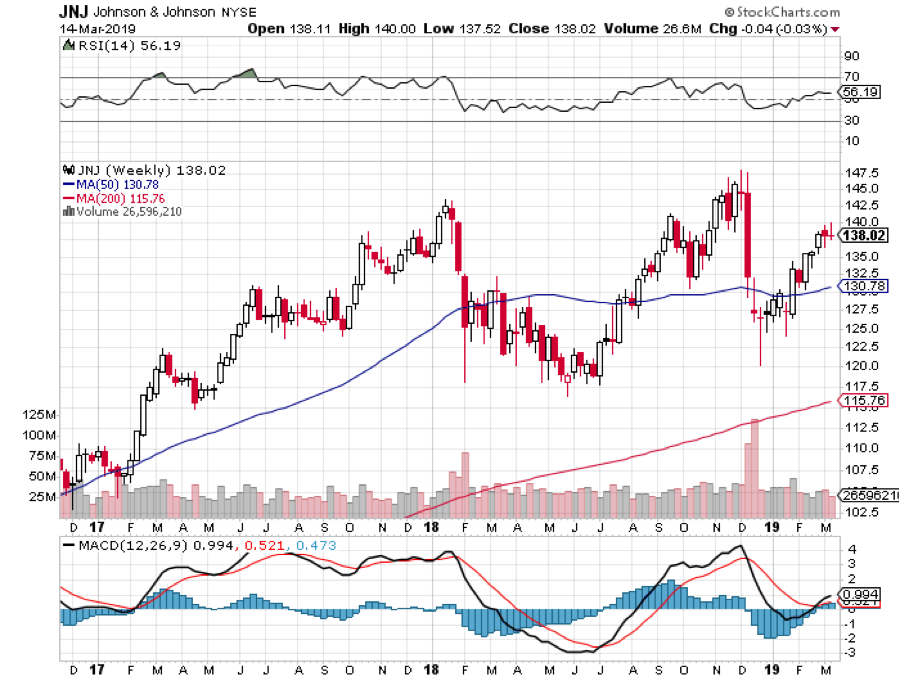
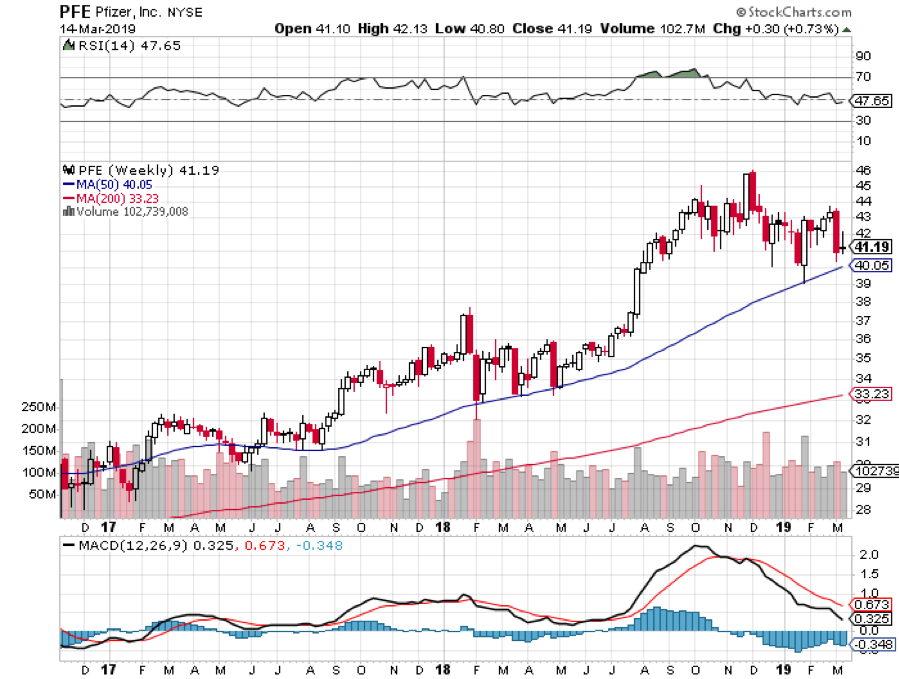
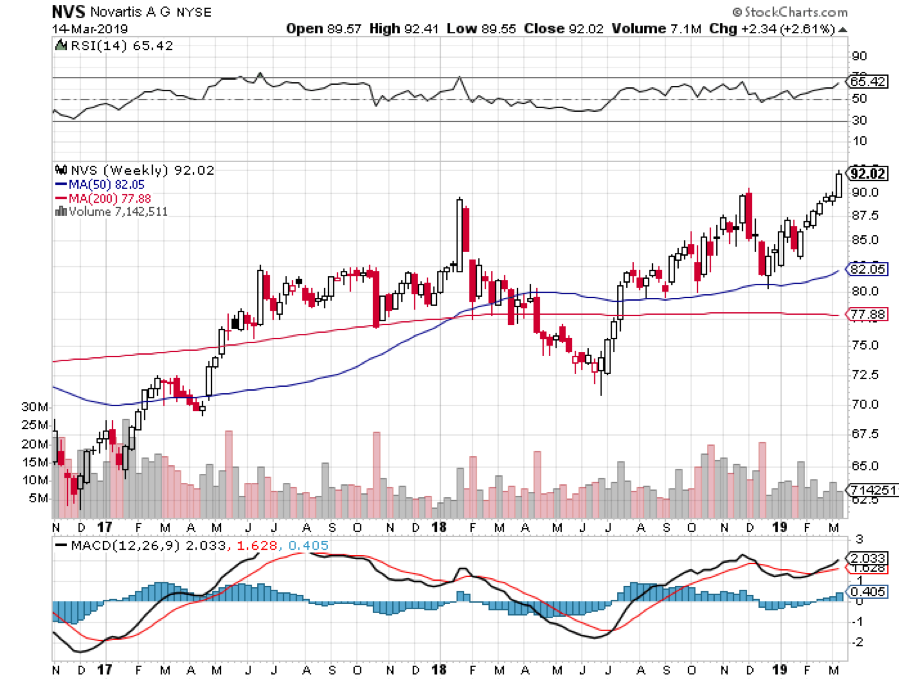
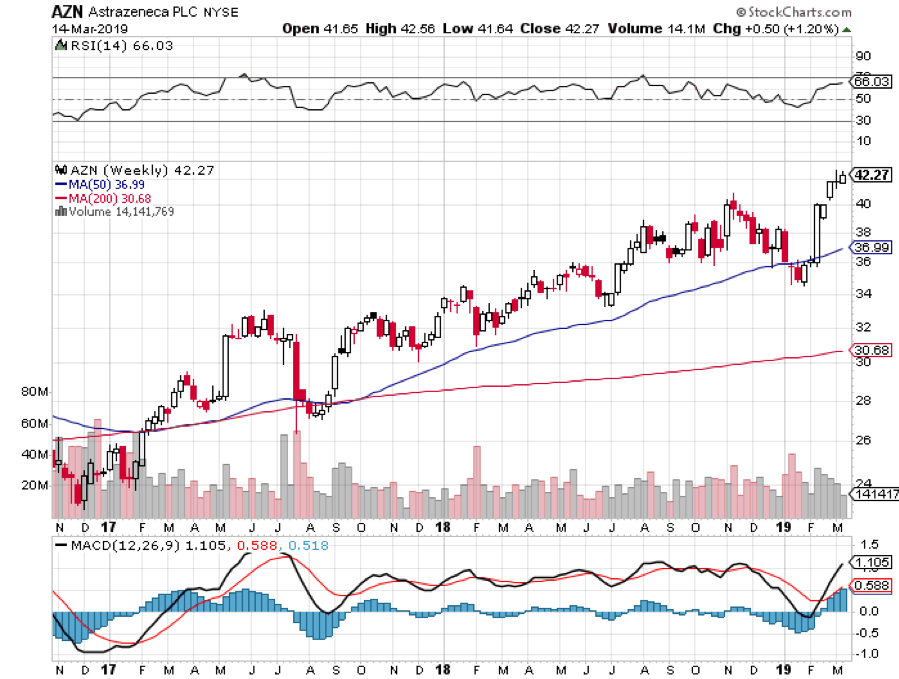

You would think that the company that makes Viagra would be booming with all these baby boomers around.
It’s not.
As we come into the tag ends of the Q1 earnings season, it is hard to ignore the pitiful performance put on by Pfizer (PFE). Its fourth-quarter earnings were totally overshadowed by its disappointing outlook and underperforming shares.
The 168-year-old drug maker can expect sustainable growth in some of its product franchises, such as prostate cancer drug Xtandi, blood clot medication Eliquis, metastatic breast cancer drug Ibrance, and arthritis medicine Xeljanz.
However, generic competitors against Pfizer mainstays like Pristiq, an anti-depressant drug, and Viagra are threatening to trigger a massive decline in the former’s sales. With generic companies hot on its heels, Pfizer faces incredible pressure in terms of pricing and lower gross margins.
Expiring patents known as the loss of exclusivities (LOE) are also projected to contribute to their red ink by approximately $2.6 billion. In particular, Pfizer is expected to lose exclusive rights to its blockbuster drugs Lyrica in June 2019 and Chantix in the next few years. To date, their LOEs already cost Pfizer $2.1 billion in sales in 2017 and an additional $1.8 billion in 2018.
Pfizer is doing better than its competitors. In the past 12 months, Pfizer EPS stood at $1.86, which showed a 47.16% decline year-over-year. By comparison, major competitor Merck & Co., Inc. (MRK) EPS was at $0.69, suffering from a 281.58% decline year-over-year while Novartis (NVS) faced a 38.8% decline with an EPS of $0.52.
Pfizer’s recorded annual revenues of $53.4 billion, which puts it ahead of its major competitors Novartis ($51 billion) and Merck & Co., Inc. ($41.7 billion).
Bleak 2019 but promising 2022. That’s a long time to hold your breath.
As far as 2019 is concerned, the pharma heavyweight does not present any growth potential in both their top and bottom lines, with their midpoints offering slightly lower revenue and earnings compared with that in 2018.
Pfizer is projected to deliver a flat year-over-year performance regardless of the major headwinds primarily due to the strong sales of its remaining products. The company continues to remain confident as it awaits roughly 25 to 30 drug approvals up to year 2022.
Among these pending potential blockbuster products, 15 are expected to be approved by 2020. In addition, Xtandi, Ibrance, and Xeljanz/XR are slated for line extensions. With regard to long-term growth, Pfizer is well positioned to make headway on innovative medical breakthroughs in the next five years or so.
Pfizer is anticipated to reap the rewards of its $93 million investment in NextCure, which is a biopharmaceutical company focused on discovering and developing next-generation immuno-oncology-based drugs.
Pfizer has also been implementing various cost-cutting and productivity measures since 2017 in an effort to offset the effects of rising expenses and push for bottom line growth (read firing people).
Their efforts include investing in new market creation strategies as well as seizing opportunities to streamline their operations and cutting down organizational layers to eliminate (or at least reduce) bureaucracy.
These initiatives are anticipated to reach completion by 2019 and are expected to bring in approximately $1.4 billion in savings by 2020.
Given the challenges ahead, Pfizer seems to offer a promising future as seen in their efforts to curb their losses. While it remains to be seen if the company can come up with any notable acquisition to jumpstart their promised progress as early as 2020, Pfizer’s current products along with its pipeline candidates appear to be capable of delivering solid growth in succeeding years. Meanwhile, Pfizer is intent on providing a growing dividend to its shareholders.
In a nutshell, Pfizer’s current status is not ideal for investors interested in immediate profits. However, those who are patient enough to wait for a few more years could be in line to receive a dividend that could yield 3.5%.
Leave this one to the index funds and ETFs. There are better fish to fry in the space.
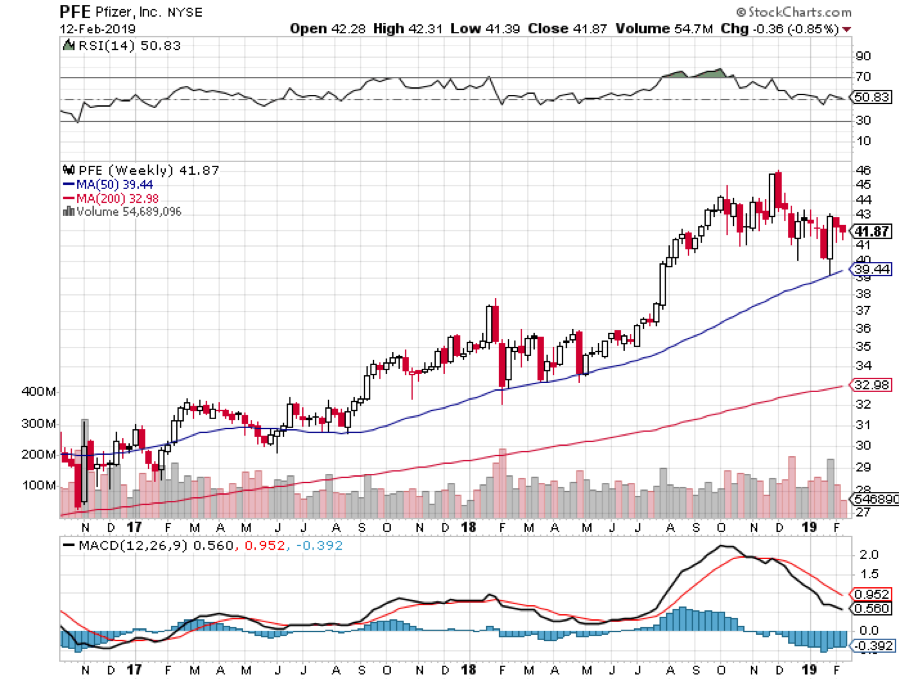
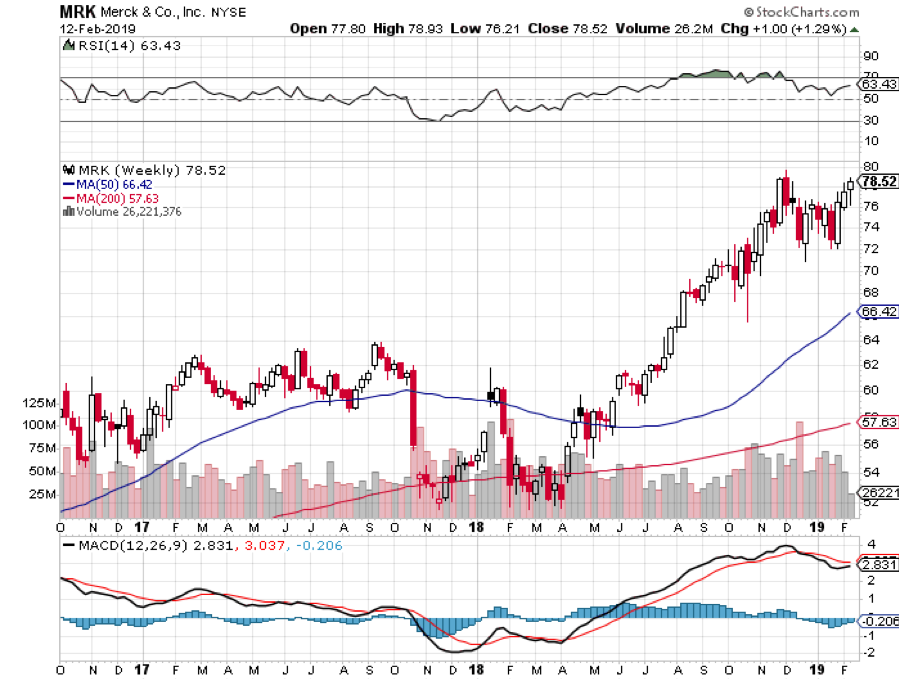
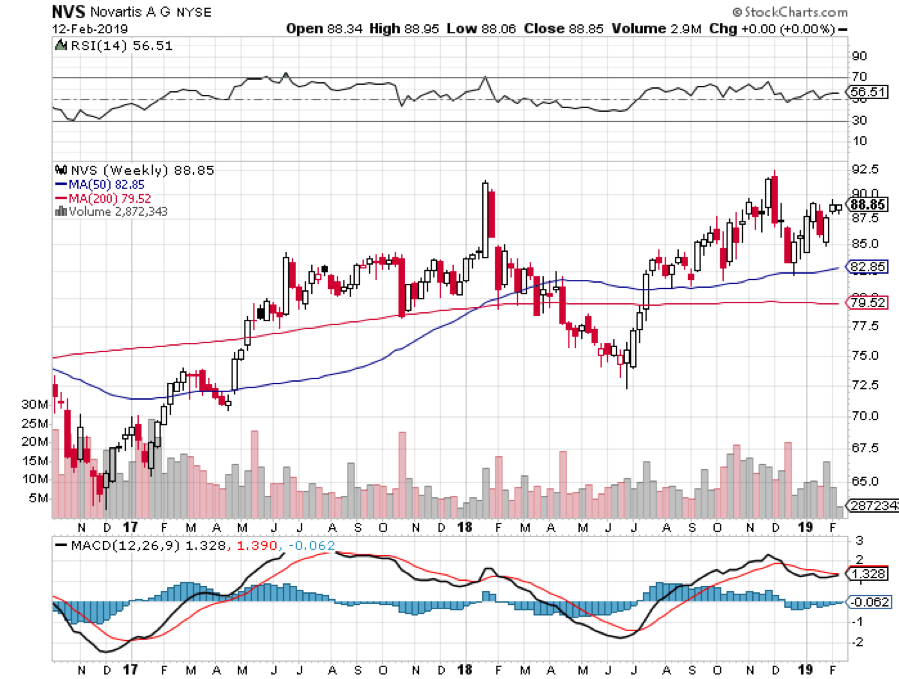
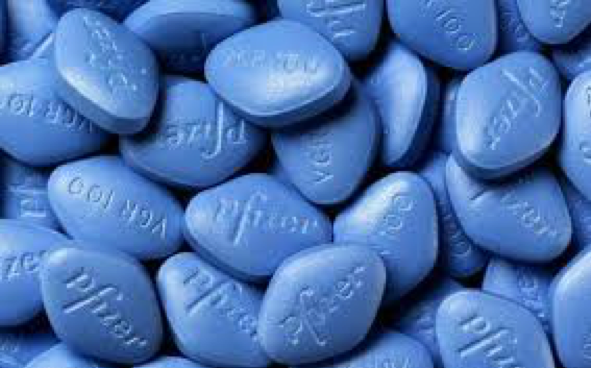
Global Market Comments
September 25, 2018
Fiat Lux
Featured Trade:
(AI AND THE NEW HEALTH CARE),
(GOOGL), (XLP), (XLV), (MRK), (BMY), (PFE),
(MONDAY, OCTOBER 15, 2018, ATLANTA, GA,
GLOBAL STRATEGY LUNCHEON)

?Give us all your money,? said the largest of the three men who snuck up behind me at the entrance to the Orlando Marriott World Hotel. It was 1:30 AM, pitch dark, and the area was abandoned.
I had my wallet out to pay the taxi driver, brimming with $5,000 in cash, my winnings at the blackjack tables at the just completed SALT conference in Las Vegas. He took off like a shot, and I was left standing there, alone.
I turned around, put my wallet in my back pocket, took off my horn rimmed glasses and said, in my most intimidating, ?I?m going to kick your ass? manner possible, ?Trying this on a Marine with post traumatic stress is a really bad idea.? The three would be muggers backed up as fast as they could and disappeared into the swamps.
It?s all about attitude.
I mentioned the incident to the hotel staff while checking in. They were horrified, apologized profusely, and gave me a triple upgrade to the presidential suite with a $100 room service credit.
Welcome to Orlando!
I was making a 24 hour pit stop in the Sunshine State to give the good news about where the financial markets will be in 2030 to a conference of top performing independent investment advisors. After knocking their socks off, I felt I had just made several lifetime friends.
I even got to trade war stories with a fellow Dessert Storm pilot who flew OV-10 twin tailed Broncos. Once, in Kuwait I was with a Marine ground unit that came under fire. The NCO said, ?Don?t worry, the Broncos are inbound.? When I heard the BRRRRRR of its M60 machine guns, it sounded like music to my ears. I thanked him for his service, and saving my ass.
This being the heart of the Deep South and the former confederacy, I was questioned about my California politics. I told my audience they had a choice. They could listen to Fox News all day, read the conspiracy theories in the Drudge Report, and live in a permanent state of anger.
Or they could work with a guy with inside access like me, gain insights into the administrations actual thinking, and learn what they are really going to do. I hand out ticker symbols too. I suggested that the latter generated a better investment return for clients, and most agreed.
The reality is that most of the country agrees on 99% of everything I told them. It is only the media (better ratings), fundraisers (more money), and politicians (more votes) who are driving us to our corners, and the internet gives everybody flame thrower.
I also get the opportunity to influence the course of events in my own small way. The White House Staff, The Treasury Secretary, the Chairman of the Federal Reserve, the Secretary of State, the Joint Chiefs of Staff, and the Director of the CIA don?t spend time with me because I wear nice Italian suits and tell funny jokes.
You can almost count on one hand the number of people around who have been refining a global economic and political view for nearly half a century.
I also said I really loved their key lime pie and pecan pralines.
It was one of those non-stop days. After a scant four hours of sleep I was up at 7:00 AM for breakfast, delivered a 90 minute keynote speech at 8:00, and followed that up with a Global Strategy Luncheon with some of my oldest most loyal and newly enriched readers.
One made more than the 68% last year following my Trade Alerts. Then I hauled my lunch guests back into the conference to listen to me participate in a panel discussion.
I ended the day meeting with my own national staff in my greatly upsized suite, who flew in from around the country. Mad Day Trader Jim Parker was happy to flee Chicago for a day. Nancy of operations was there as fresh faced as always, as was Doug the Web developer, who we are now calling ?the lumberjack,? since he has a beard and lives in the middle of nowhere in remote Vermont.
We devised a series of new groundbreaking products, which you will be hearing about shortly. Such is life on the cutting edge of online financial education. Oh, and prices are going up too, as befits our industry beating performance.
I caught an early dinner with an old hedge fund buddy from Tampa, discussing the current state of the world. Then it was back to the hotel for an extended drinking session with the staff, who are indispensable in helping me run my global media empire.
No rest for the wicked.
By the way, I am writing all this to you from first class seat 2C on Virgin America flight VX 305, nonstop from Orlando to San Francisco. It is a perfect day, and we have just crossed the vast expanse of the ?Big Muddy,? Mark Twain?s home waters, known to you all as the Mississippi River.
I mentioned to the pilot that with my frequent flier points and platinum status the crew should have lined up and saluted when I came on board. They laughed. Then I asked if he noticed the old Strategic Air Command B-52 bomber at the airport entrance.
He said he did, and that he had worked on the birds as a senior tech in the old days, charged with arming the nuclear warheads on the cruise missiles. He was amazed when I told him the Germans designed the Stratofortress during WWII so they could bomb New York.
They never built it, but the Americans did when they found the plans at the end of the war. Out of the original fleet of 500, 75 still fly, and the Air Force intends to keep flying them until 2050, when they will be 100 years old. No kidding. A lot of Air Force pilots still say it was the best plane ever designed.
Got to love Boeing Aircraft (BA). Made in the USA.
I recounted my own stories of flying on nuclear armed missions from Anderson Air Force Base on Guam in the Pacific to North Korea, only to turn around ten minutes before we entered their air space.
We did this every Monday-Thursday, dropped conventional 500 pound bombs at a Western Australian missile range on Fridays, and took the weekends off to drink beer on pristine Tauragi beech, mindful of the armed Japanese soldiers still lurking in the jungle nearby. This was 1973.
There were no windows for the ten-hour flight. Even the front windshield carried removable steel blast shields. Good thing they always carried a spare coffee maker.
The message to the Kim Il-sung regime was clear. Be nice, or we fly the extra ten minutes. President Teddy Roosevelt (I met his oldest daughter Alice, no kidding, again!), wisely called this ?walking softly, but carrying a big stick.? Well, maybe not so softly.
The flight out was uneventful. I noticed that the older passenger next to me was wearing an $8,000 Brioni jacket identical to mine, so I complimented him on his taste in clothing. He turned out to be the head of the Neurology Department at the University of Arizona Medical School, so we spent three hours discussing the ins and outs of Obamacare. It turned a long flight into a short flight.
Bottom line? It?s going to work, give the health care industry a long overdue shake up, unleash free market competition, and improve the quality of care for all, while reducing the costs. But it may take a decade to work out the kinks. Expect a lot of disruption until then.
I added that it was also creating the investment opportunity of the decade. He said ?Oh?? and I gave him a handful of ticker symbols Gilead Sciences (GILD), the iShares Biotech ETF (IBB), Pfizer (PFE), and HCA Holdings (HCA). These doctors, so smart, yet so useless when it comes to managing their own money.
I asked if these views were controversial in ultra red state Arizona, and he said ?yes.? But at a certain point, people of all political persuasions just want the facts so they can get on with their lives. So true, so true.
We then talked about what a great guy Barry Goldwater was (another bomber pilot, B-25?s), and how his political career was ended by an unfair Johnson smear campaign (the little girl counting down the petals of a flower until a hydrogen bomb went off in the background).
Some things never change.
As is my way, I then convinced him to give me a complete physical while remaining in my seat. Was hiking 2,000 miles a year in the mountains with a 60 pound pack killing me? Was it doing more damage to my poor aging body than it was worth?
He gave me the once over. At 45 beats a minute, I had the resting heart rate of a teenaged Olympic athlete. My blood pressure at 110/70 was fabulous. Even the big toe that I froze in a high altitude blizzard last winter and was still black would get better (?That toenail really looks like it wants to come off?) (the other first class passengers are now looking over curiously). The knees would get better over my summer break. He said whatever I was doing, I should keep doing it.
It looks like I will be around for a while.
The passenger in the other seat next to me was a stunning 6?1? blonde from Atlanta. After Stacy read my website through the onboard Wi-Fi, she handed me her business card with her cell number scratched on the back.
I?m not the player I was in decades past, but it is still nice to get this kind of attention when you are Social Security age. Now I know why they call them Southern Belles.
We just crossed the snow covered High Sierras and have begun our descent into San Francisco. It?s time to fold up my laptop and fasten my seatbelt.
I?m sorry, this is turning into a bit of a ramble, but it is a long flight. This is my life, a never-ending series of utterly fascinating conversations about everything with everybody. It seems there is now a shapely brunette in the seat behind me who also wants my business card.
See you at my weekly Global Strategy webinar on Wednesday.
Wink. Wink.
 OV-10 Bronco Light Attack Aircraft
OV-10 Bronco Light Attack AircraftLegal Disclaimer
There is a very high degree of risk involved in trading. Past results are not indicative of future returns. MadHedgeFundTrader.com and all individuals affiliated with this site assume no responsibilities for your trading and investment results. The indicators, strategies, columns, articles and all other features are for educational purposes only and should not be construed as investment advice. Information for futures trading observations are obtained from sources believed to be reliable, but we do not warrant its completeness or accuracy, or warrant any results from the use of the information. Your use of the trading observations is entirely at your own risk and it is your sole responsibility to evaluate the accuracy, completeness and usefulness of the information. You must assess the risk of any trade with your broker and make your own independent decisions regarding any securities mentioned herein. Affiliates of MadHedgeFundTrader.com may have a position or effect transactions in the securities described herein (or options thereon) and/or otherwise employ trading strategies that may be consistent or inconsistent with the provided strategies.
This site uses cookies. By continuing to browse the site, you are agreeing to our use of cookies.
OKLearn moreWe may request cookies to be set on your device. We use cookies to let us know when you visit our websites, how you interact with us, to enrich your user experience, and to customize your relationship with our website.
Click on the different category headings to find out more. You can also change some of your preferences. Note that blocking some types of cookies may impact your experience on our websites and the services we are able to offer.
These cookies are strictly necessary to provide you with services available through our website and to use some of its features.
Because these cookies are strictly necessary to deliver the website, refuseing them will have impact how our site functions. You always can block or delete cookies by changing your browser settings and force blocking all cookies on this website. But this will always prompt you to accept/refuse cookies when revisiting our site.
We fully respect if you want to refuse cookies but to avoid asking you again and again kindly allow us to store a cookie for that. You are free to opt out any time or opt in for other cookies to get a better experience. If you refuse cookies we will remove all set cookies in our domain.
We provide you with a list of stored cookies on your computer in our domain so you can check what we stored. Due to security reasons we are not able to show or modify cookies from other domains. You can check these in your browser security settings.
These cookies collect information that is used either in aggregate form to help us understand how our website is being used or how effective our marketing campaigns are, or to help us customize our website and application for you in order to enhance your experience.
If you do not want that we track your visist to our site you can disable tracking in your browser here:
We also use different external services like Google Webfonts, Google Maps, and external Video providers. Since these providers may collect personal data like your IP address we allow you to block them here. Please be aware that this might heavily reduce the functionality and appearance of our site. Changes will take effect once you reload the page.
Google Webfont Settings:
Google Map Settings:
Vimeo and Youtube video embeds:
